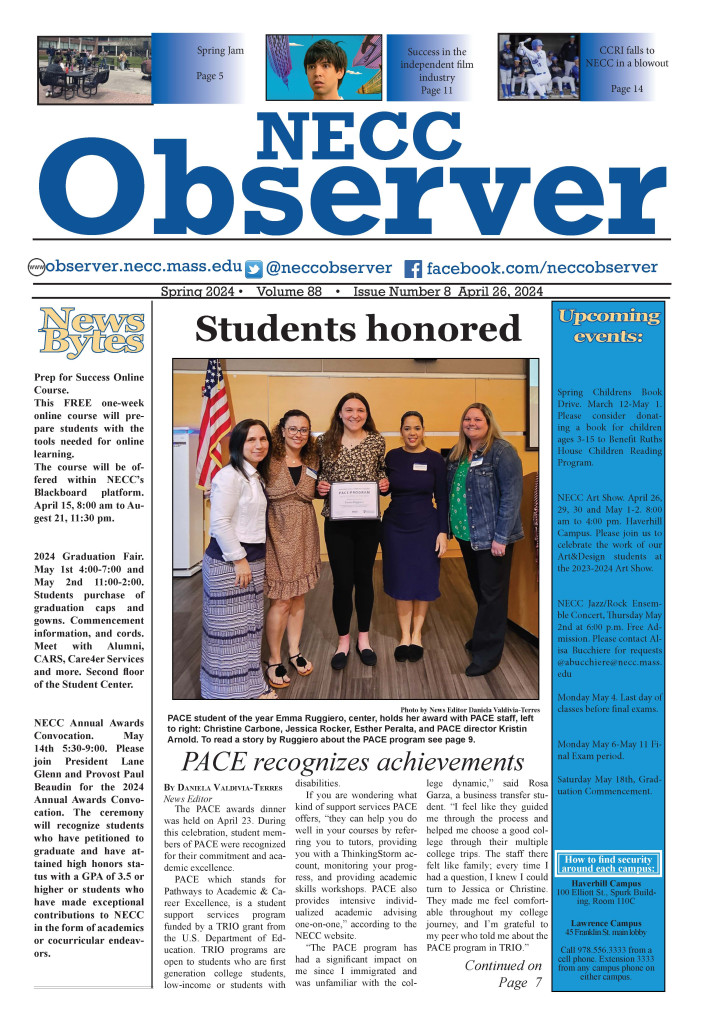Less and less students are attending college as the pandemic continues to show its effects on our country, and academic professionals are wondering what this is going to mean for the future of academia and the economy. NPR recently reported that over a million less students enrolled in an undergraduate program than before 2020 this year alone.
This means that the enrollment rate has fallen a total of 6.6% since the beginning of the pandemic.
As a student of NECC, I would argue that these effects are very visible in daily campus life.
The connection between peers, professors and campus life has fallen drastically since the beginning of the
pandemic, and it is becoming obvious that kids are beginning to suffer socially because of the change of dynamic on campus.
NPR also reported that community colleges were feeling the majority of the decline in enrollment, showing 13% enrollment drop since before covid-19.
Many people believe that part of the reasoning in the enrollment decline is because of students who decided to take a gap year, and never persisted in enrolling into a program afterwards.
As someone who was considering a gap year while the effects of the pandemic continued to negatively spread in the United States, I would argue that it was definitely easy to fall into this mindset.
It is becoming more and more popular amongst college aged students to obtain an associates degree, or no degree at all, followed by going directly into the workforce because of the instant reward they might receive, such as a paycheck.
As the price of tuition continues to increase drastically amongst four year schools, I believe this trend will continue to move upwards.
There are many factors that could impact why less and less students are feeling the need to enroll in college after highschool, one of which could be their financial situations.
Many Americans were affected negatively by the pandemic, and ended up with expenses for medical purposes, as well as feeling the pressure of inflation as our economy tries to plateau again.
Over the past year, the average public college tuition has increased by 3.4%, with an average tuition of over 38 thousand dollars.
Because of this, and the increasing employment pool, it can be assumed that college aged kids would rather get out and work rather than continuing their education beyond highschool and paying such prices.
Doug Shapiro, from the National Student Clearinghouse states that this may pose an issue for students in the long run, saying:
“It’s very tempting for high school graduates, but the fear is that they are trading a short-term gain for a long-term loss,” according to the same article from NPR.
He argues that it is going to be harder for college aged kids to get back into school after pushing it off for a certain amount of years, and there is a strong possibility that they might never go back.
So, what does a lower presence of kids in college mean for the state of our country in the long run?
Well, less students graduating with the necessary skills for the workplace means less competition for pay in a given job.
Therefore, a decrease in more experienced workers means less high wage jobs, and in turn an increase of welfare costs.
There are many ways students themselves can lower the cost of tuition if they are proactive.
Utilizing resources such as taking AP classes in high school, considering dual
enrollment, starting at a community college, and trying to save money on supplies such as new textbooks may help, however the increase of tuition is in the hands of the universities themselves.
Creating affordable and reasonably priced public education may be one of the most effective ways to see an increase in enrollment for college aged kids.

